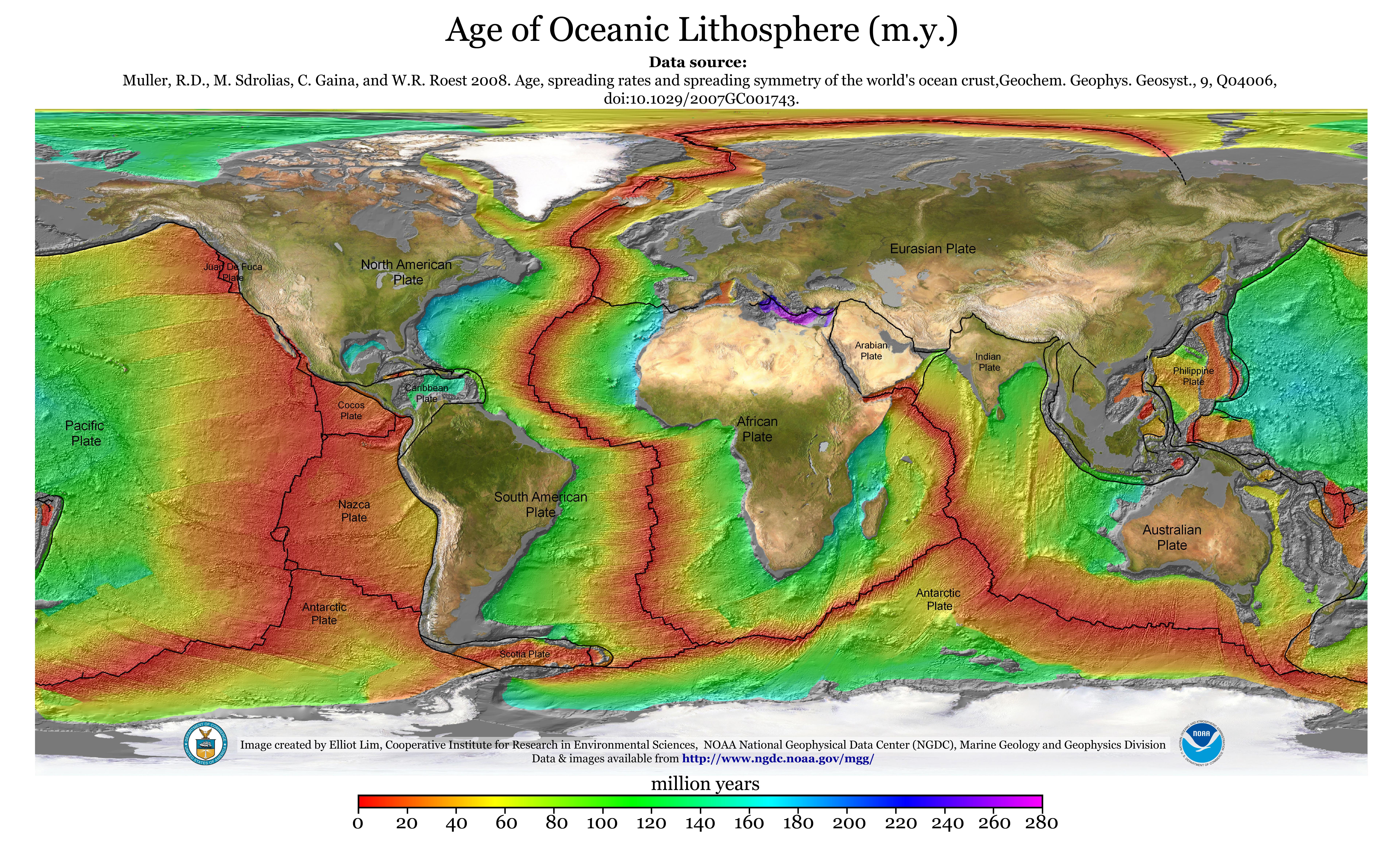Age of Oceanic Lithosphere Map


Alex Cartwright
Senior Cartographer & GIS Specialist
Alex Cartwright is a renowned cartographer and geographic information systems specialist with over 15 years of experience in spatial analysis and data...
Geographic Analysis
What This Map Shows
The "Age of Oceanic Lithosphere Map" displays the distribution and ages of the oceanic lithosphere across the world's oceans, providing insights into the geological processes that shape our planet. The map uses color gradients to represent different ages of oceanic crust, allowing us to visualize how the ocean floor has evolved over millions of years.
Understanding the oceanic lithosphere is crucial because it acts as a key component in plate tectonics, influencing not just the physical geography of the Earth, but also its geological activity, including earthquakes and volcanic eruptions. The map highlights the younger lithosphere formed at mid-ocean ridges and the older, cooler areas that have moved away from these ridges over time.
Deep Dive into Oceanic Lithosphere
The oceanic lithosphere is primarily composed of basaltic rocks and is relatively thin compared to continental lithosphere. It plays a vital role in the tectonic processes that govern the Earth's surface. The lithosphere is formed at mid-ocean ridges, where tectonic plates pull apart, allowing magma to rise and solidify, creating new oceanic crust. The age of this crust increases with distance from the ridge, illustrating the dynamic nature of our planet's geology.
Interestingly, the oceanic lithosphere is generally younger than its continental counterpart. For example, the oldest oceanic crust is found around 200 million years old in the western Pacific Ocean, while continental crust can be over 4 billion years old. This disparity highlights the continual renewal of oceanic crust through geological processes.
The concept of seafloor spreading is essential to understanding the age distribution of the oceanic lithosphere. As tectonic plates diverge at mid-ocean ridges, new crust is created, pushing older crust away from the ridge. This process not only shapes the topography of the ocean floor but also influences ocean currents and climate patterns.
Furthermore, the age of the oceanic lithosphere is crucial for understanding the history of Earth's magnetic field. As magma cools, minerals within the rock align with the Earth's magnetic field, preserving a record of its orientation. This phenomenon allows geologists to study past magnetic reversals and better understand the planet's geological history.
The oceanic lithosphere is also integral in the study of natural disasters. Areas where the lithosphere is older and denser are often sites of subduction, where one tectonic plate is forced under another, leading to volcanic activity and earthquakes. This connection between age and geological activity makes understanding the lithosphere essential for disaster preparedness in coastal regions.
Regional Analysis
When examining the map, we can see distinct age patterns in different ocean basins. The Atlantic Ocean, for example, showcases a relatively younger lithosphere along the Mid-Atlantic Ridge, with ages decreasing as you move towards the coasts of North America and Europe. In contrast, the Pacific Ocean contains some of the oldest oceanic crust, particularly near the Japan Trench and the Mariana Trench, indicating a long history of tectonic activity and subduction processes.
In the Indian Ocean, the lithosphere is also quite diverse, with younger crust near the spreading center at the Central Indian Ridge and older crust towards the continental margins. This diversity can lead to variations in marine ecosystems and biodiversity, as the geological age may influence nutrient availability and habitat structure in the ocean.
What’s fascinating is how these age distributions can impact oceanic circulation patterns. Younger, hotter lithosphere can affect sea floor topography, which in turn influences water movement and the distribution of marine species across different oceanic regions.
Significance and Impact
The age of the oceanic lithosphere is not just a scientific curiosity; it has real-world implications. Understanding the lithosphere helps scientists predict geological events, assess natural resources, and even address climate change concerns. For instance, as seafloor spreading continues, it plays a role in carbon cycling and ocean chemistry, which are critical factors in global climate dynamics.
Additionally, the relationship between lithosphere age and tectonic activity has significant implications for coastal communities. Areas with older lithosphere may be more susceptible to earthquakes and tsunamis, necessitating robust disaster response strategies. As climate change continues to impact ocean temperatures and sea levels, the interplay between oceanic lithosphere age, geological activity, and environmental changes will be a critical area of research in the coming years.
In conclusion, the "Age of Oceanic Lithosphere Map" is more than just a representation of geological ages; it’s a window into the dynamic processes that shape our planet. The insights gained from studying oceanic lithosphere not only enrich our understanding of Earth’s history but also guide our response to present and future geological challenges.
Visualization Details
- Published
- September 19, 2025
- Views
- 56
Comments
Loading comments...